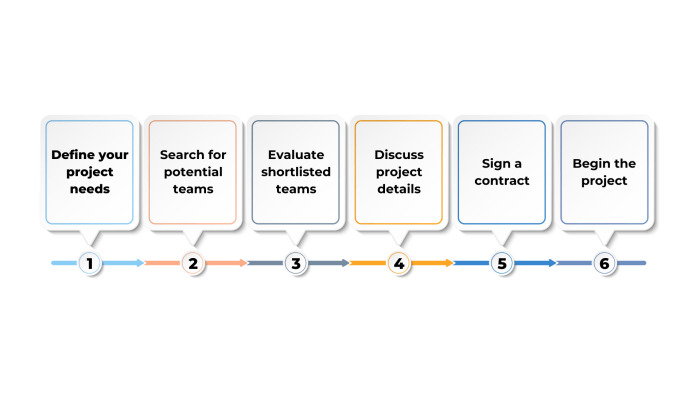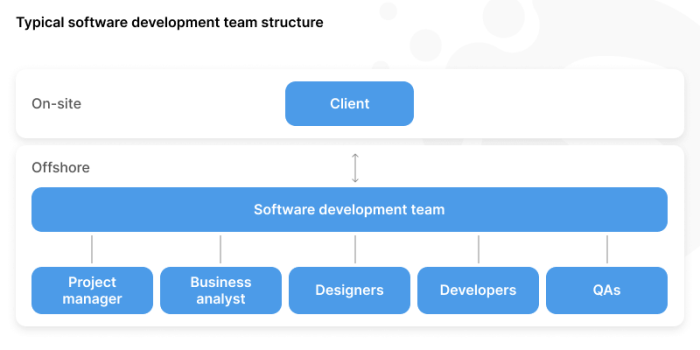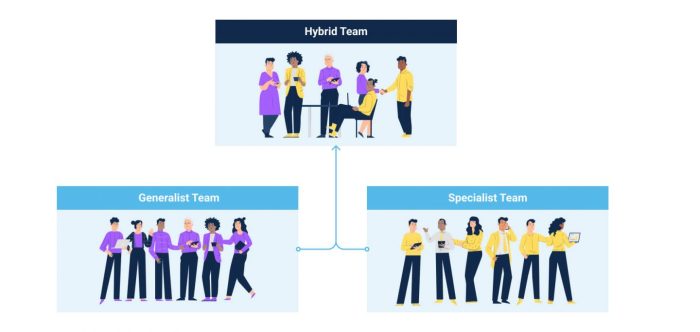Nearshore software development team – In today’s globally interconnected business landscape, outsourcing software development has become a critical strategy for companies of all sizes. While offshore outsourcing offers significant cost savings, it often comes with challenges related to communication, time zone differences, and cultural nuances. Nearshore software development offers a compelling alternative, bridging the gap between cost-effectiveness and seamless collaboration.
What is Nearshore Software Development?
Nearshore software development involves outsourcing software development projects to a country geographically closer to your own. Unlike offshore outsourcing, which typically involves significant geographical distance (e.g., outsourcing to India or the Philippines from the US), nearshore outsourcing focuses on countries within the same time zone or a nearby time zone. This proximity significantly reduces communication barriers and facilitates smoother project management.
Benefits of Choosing a Nearshore Software Development Team
- Reduced Time Zone Differences: Real-time communication and collaboration are significantly easier, leading to faster turnaround times and improved project efficiency. This is a key advantage over offshore outsourcing where significant time differences can hinder daily communication and responsiveness.
- Improved Communication and Collaboration: Shared language and cultural understanding minimize misunderstandings and improve the overall effectiveness of communication. This fosters a stronger working relationship between your in-house team and the nearshore development team.
- Cost-Effectiveness: While not as dramatically low as offshore rates, nearshore development still offers significant cost savings compared to building an in-house team, especially considering the overhead costs involved in recruitment, training, and infrastructure.
- Faster Time to Market: The ease of communication and collaboration leads to faster development cycles, allowing you to launch your product or service more quickly.
- Access to Skilled Talent: Many nearshore locations boast a highly skilled and readily available pool of software developers, often with expertise in specific technologies.
- Easier Travel and On-Site Visits: The geographical proximity allows for easier and more cost-effective travel for meetings, training, and project oversight.
- Stronger Intellectual Property Protection: Working with a nearshore team in a country with similar legal frameworks can provide a higher degree of confidence in protecting your intellectual property.
Choosing the Right Nearshore Location
The ideal nearshore location will depend on several factors, including your company’s location, budget, required skill sets, and language preferences. Some popular nearshore destinations include:
- Mexico for US Companies: Mexico offers a blend of cost-effectiveness, proximity, and a growing pool of skilled developers. Many Mexican developers are fluent in English.
- Canada for US Companies: Canada provides a high-quality talent pool with strong English proficiency and a similar cultural background to the US, although at a higher cost than Mexico.
- Latin America (e.g., Colombia, Argentina, Brazil) for US Companies: These countries offer a growing tech sector and a relatively lower cost of development compared to the US, although language barriers may be more significant.
- Eastern European Countries (e.g., Poland, Ukraine) for Western European Companies: These countries offer a strong technical talent pool, often with proficiency in English, and relatively competitive costs.
Factors to Consider When Selecting a Nearshore Partner
- Technical Expertise: Ensure the nearshore team possesses the necessary skills and experience in the relevant technologies.
- Communication Skills: Effective communication is crucial. Assess the team’s English proficiency and their communication style.
- Project Management Capabilities: Choose a team with a proven track record of successfully managing software development projects.
- Company Culture and Values: Ensure the nearshore team’s values align with your company culture to foster a positive working relationship.
- Security and Data Protection: Verify the team’s security protocols and their commitment to protecting your data.
- Legal and Contractual Aspects: Ensure you have a well-defined contract that Artikels the scope of work, payment terms, and intellectual property rights.
Managing a Nearshore Software Development Team
Effective management of a nearshore team requires a proactive approach. Regular communication, clear expectations, and robust project management tools are essential.
Tips for Successful Nearshore Collaboration
- Establish Clear Communication Channels: Use a combination of tools like video conferencing, instant messaging, and project management software to maintain consistent communication.
- Define Roles and Responsibilities Clearly: Artikel the roles and responsibilities of both your in-house team and the nearshore team to avoid confusion and overlap.
- Utilize Project Management Tools: Employ project management software to track progress, manage tasks, and facilitate collaboration.
- Regular Check-ins and Meetings: Schedule regular meetings (daily stand-ups, weekly progress reviews) to ensure everyone is on the same page.
- Foster a Collaborative Culture: Encourage open communication and collaboration between both teams.
- Build Trust and Rapport: Invest time in building strong relationships with your nearshore team to foster trust and mutual understanding.
Nearshore vs. Offshore vs. Onshore Development
Understanding the differences between nearshore, offshore, and onshore development is crucial for making an informed decision. Each approach has its own advantages and disadvantages.
| Factor | Nearshore | Offshore | Onshore |
|---|---|---|---|
| Geographic Location | Relatively close | Far away | Same location |
| Cost | Moderate | Low | High |
| Communication | Excellent | Challenging | Easy |
| Time Zone Differences | Minimal | Significant | None |
| Cultural Differences | Minimal | Potential for significant differences | Minimal |
Frequently Asked Questions (FAQ)
- Q: What are the risks of nearshore software development? A: Potential risks include language barriers (though minimized compared to offshore), cultural differences, and the need for careful selection of a reliable partner.
- Q: How do I find a reputable nearshore software development team? A: Research potential partners thoroughly, check online reviews, request references, and carefully review their portfolio and experience.
- Q: What is the typical cost of nearshore software development? A: Costs vary depending on the location, team size, and project complexity. It’s generally more expensive than offshore but less expensive than onshore.
- Q: How can I ensure effective communication with a nearshore team? A: Establish clear communication channels, use project management tools, and schedule regular meetings.
- Q: What are the key differences between nearshore and offshore development? A: Nearshore development involves working with teams in geographically closer locations, resulting in improved communication and collaboration compared to offshore development.
Conclusion
Nearshore software development offers a compelling solution for businesses seeking a balance between cost-effectiveness, efficient communication, and access to skilled talent. By carefully selecting a nearshore partner and implementing effective management strategies, companies can leverage the benefits of nearshore outsourcing to accelerate their software development projects and achieve their business goals.

Source: eastgate-software.com
References
- Toptal – Nearshore Software Development
- Outsource.com – Nearshore Outsourcing
- Simform – Nearshore vs. Offshore Software Development
Call to Action
Ready to explore the benefits of nearshore software development for your next project? Contact us today for a free consultation!
FAQ Explained: Nearshore Software Development Team
What are the key differences between nearshore and offshore development?
Nearshore development involves outsourcing to a geographically closer country, often sharing a similar time zone and cultural understanding, while offshore development utilizes teams located in significantly more distant locations.
How can I ensure effective communication with a nearshore team?

Source: softermii.com
Establish clear communication protocols, utilize project management tools, and schedule regular meetings to maintain transparency and address any issues promptly.
What are some potential challenges of using a nearshore development team?
Potential challenges include language barriers (even with geographically close locations), differences in work culture, and potential time zone discrepancies (though often less pronounced than with offshore teams).
How do I choose the right nearshore partner?

Source: attractgroup.com
Thoroughly research potential partners, assess their technical expertise and experience, review client testimonials, and clearly define your project requirements and expectations before selecting a team.
